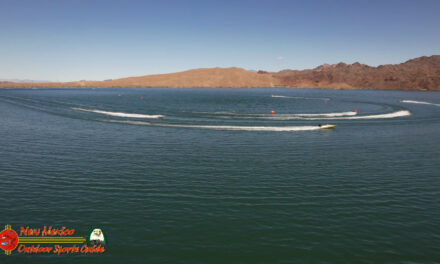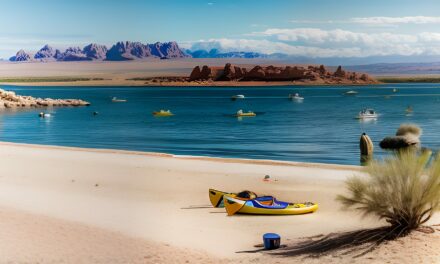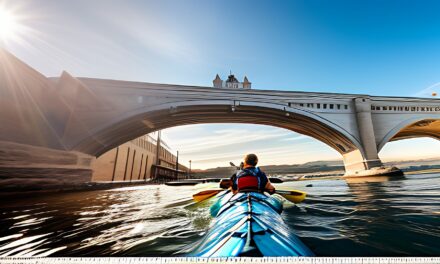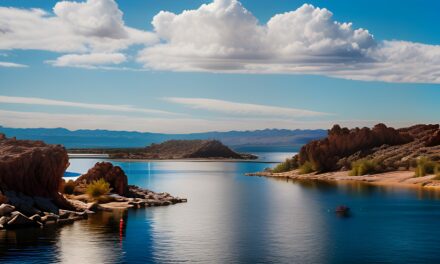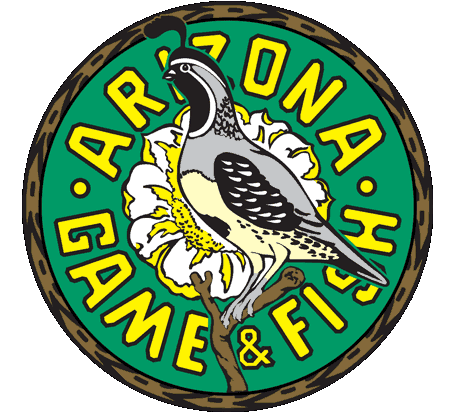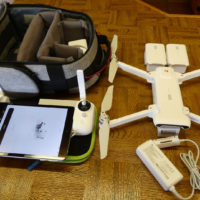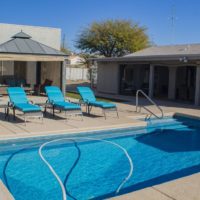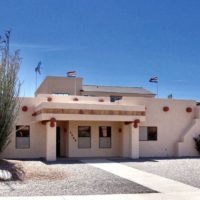Rinker’s Boat World Pontoon Boats – Lake Havasu
Rinker’s Boat World will have a real show piece in their booth this year! Rinker’s has brought in a 301 JC Tri Toon, that is set up to install two jet skis on the bow.
Approximately 2/3’s of the boat is set up like a 221 Tri-Pontoon with all the amenities, such as, sundeck, ice chest, stereo, ski tow, seating for 12, and much more. The front of the boat is arranged so that two jet skis can be placed on the front of the deck using a jib crane. The crane is powered by a 12 volt motor and is constructed of aluminum. The crane has a 550 lb capacity.
The 306 Tri Toon is powered by a 350 Magnum Mercruiser, producing 250 horsepower. With two jet skis on the bow the 306 will run over 35 MPH.
Skiing behind the 306 is absolutely no problem. The MerCruiser generates tremendous power, pulling several adult skiers, and the wake is very similar to that of a tournament ski boat.
Rinker’s Boat World has sold over 200 Tri Toons to area customers. They invite you to come look at the most versatile boats on the market. The JC Tri Toons can be seen in booth W 213 in the West Wing of the Astrohall! – Lake Havasu
Read More
